5 Reasons Ground Zeroes is the Best Metal Gear Game Ever Made (and 3 Ways It Isn’t)
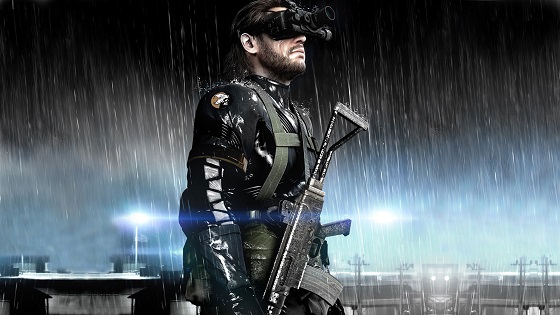 |
The Metal Gear series is one of the cornerstone franchises in video gaming, with central characters Solid Snake and his “father” Big Boss being two of the most celebrated in the entire medium. Snake made his way into a Smash Bros. game, for God’s sake. Since the first game came out on the MSX2 in 1987, lead designer, writer and director Hideo Kojima has made the stealth franchise very much his own, peppering it with esoteric pop-culture references and his love of anime and huge mechs, not to mention a plethora of insane conspiracy theories…and deep philosophical questions, like whether love truly can bloom on the battlefield.
While Ground Zeroes is technically Metal Gear Solid V, it’s merely the first act of a much larger campaign, known as The Phantom Pain, which is set to release at some unspecified time. It also takes some of the biggest risks in the series thus far. Depending on how thorough the player is, it can be completed in one to two hours (Konami wisely decided not to charge full price for this entry). It also has an entirely new, open-world style of gameplay. But for the most part, Ground Zeroes‘ risks pay off in a huge way, and it’s arguably the best entry in the franchise yet.
Don’t believe it? Then you should consider…
1. It Doesn’t Hold Your Hand
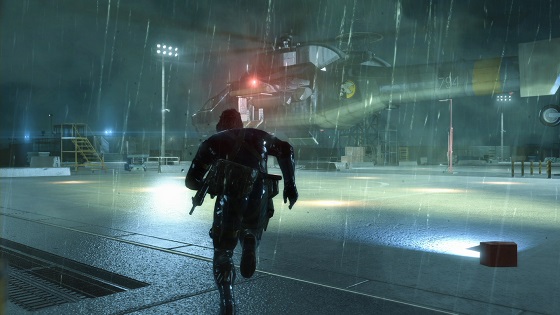 |
| Kojima Productions |
For a long time, Hideo Kojima seemed extremely concerned with having players go through his games exactly how he wanted them to. Items like cigarettes and the guided Nikita missile launcher were included solely to get Snake through specific areas of the game. Linearity was stressed. Until recently, much of the series’ design could be described as the child of a control freak who didn’t like anyone else playing with his Lego. The style was unmistakeably Kojima’s, but after a while that wasn’t necessarily a good thing.
Though small in scope, however, Ground Zeroes is very much an open-world game. The designers give you the necessary tools and, like supportive but negligent parents, drop you into the heavily-guarded military base to proceed how you please. For the developmental psychology nerds in the audience, this style of design is more like authoritative than authoritarian parenting, and it’s perhaps the biggest breath of fresh air Metal Gear has gotten in a while. Granted, its head was previously being forced underwater, so that might not be saying much.
2. You Aren’t Constantly Being Interrupted
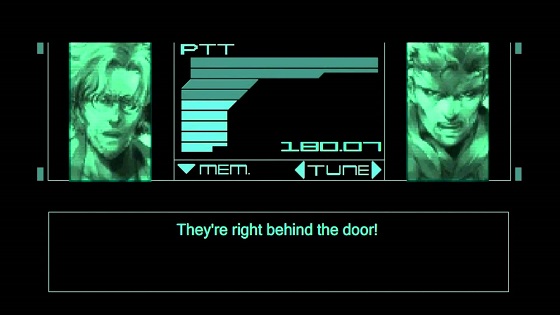 |
| Konami Computer Entertainment Japan |
The first Metal Gear Solid started a pretty grating trend in the series as a whole, wherein, at least during the opening portions of the game, any progress the player makes is frequently interrupted by cutscenes or the ubiquitous Codec conversations. Any time you had to make use of a new move or tool, you couldn’t just learn this through an on-screen prompt. No, the designers would take you out of the action for minutes at a time to explain a concept that most games would relay non-intrusively. And the cutscenes – the godforsaken cut scenes. Do you know how many cut scenes are in Metal Gear Solid 4: Guns of the Patriots? Over eight freaking hours.
But that isn’t how Ground Zeroes rolls. It begins and ends with lengthy, in-engine cinematics (the first of which is pretty much a work of art), and “Master” Kaz Miller is oh so kind to relay the necessary information and instructions via radio, allowing you to walk and talk. In this way, it plays out like, well, a modern video game. Why it took Kojima a decade and a half to figure this out is anyone’s guess.
3. Kiefer Sutherland Makes a Better Snake (for This Game)
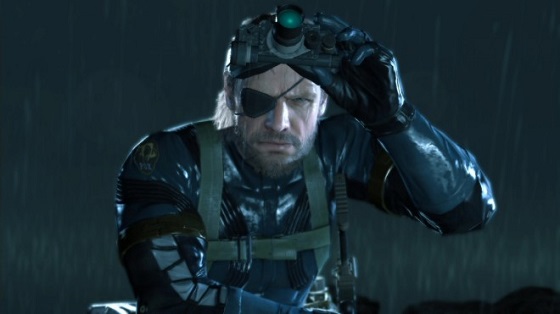 |
| Kojima Productions |
Okay, this isn’t to crap on everything David Hayter has contributed to the Metal Gear franchise and gaming at large. Make no mistake, his voice work helped elevate Solid Snake to one of the greatest characters in video gaming history (he also wrote the original story for the first X-Men movie, so he deserves even more props). But as key as he is to this franchise’s success, David Hayter would not have worked in this game.
Listen to Snake’s (or Big Boss’) voice in the previous games. Try to appreciate it in and of itself. When you get right down to it, Snake has always sounded like a character you’d hear in a dubbed anime, and in the past, when Metal Gear had its tongue planted firmly in cheek and pretty much every other character sounded similarly exaggerated, that was fine. But now that Metal Gear has delved into the world of intricate, motion-captured facial mapping, realistic animations and all of the latest advancements the new generation of consoles has to offer, any contribution Hayter might have made would have stuck out like a sore thumb. Sutherland might not have sounded his absolute best – sounding like a gruffer/drunker version of Jack Bauer – but his contributions don’t distract the gamer from their gameplay experience nearly as much as Hayter would have.
4. Its Story Is Mostly Free of Bullshit
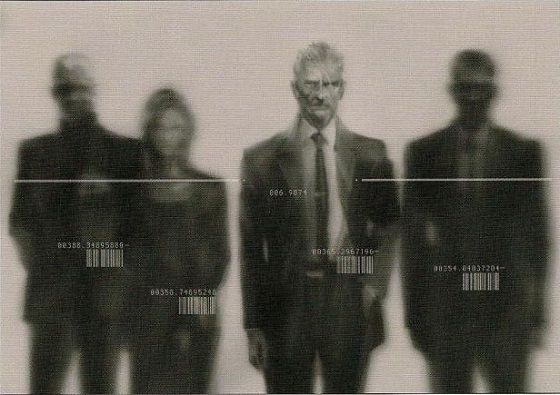 |
| Kojima Productions |
Good news for anyone tired of Metal Gear‘s convoluted exposition, overarching conspiracies and triple/quadruple-agents: there is close to none of that in Ground Zeroes. At no point in the game proper are the words “Philosophers” or “Patriots” spoken. In having to put a smaller product to market – more a glorified demo than anything – Kojima and his fellow writers were forced to separate most of the chaff from their wheat and as a result it’s the most direct and to-the-point Metal Gear game since, perhaps, the first.
Except…this isn’t entirely true: Ground Zeroes still has all of the complicated and mind-boggling backstory and tangents of its predecessors, but with this latest game Kojima Productions has wisely decided to excise it from the primary gameplay experience and relegate it to a bunch of optional read- and listen-only exposition in the extras menu. If Peter Jackson had approached The Hobbit in the same fashion, there would be only one movie, with all of the added stuff from the appendices and Unfinished Tales hidden away on the Blu-ray… which actually sounds a hell of a lot more watchable. This is perhaps the most insane sentence ever written, but perhaps Peter Jackson should take a couple of cues from Hideo Kojima.
5. It Makes Stealth Fun
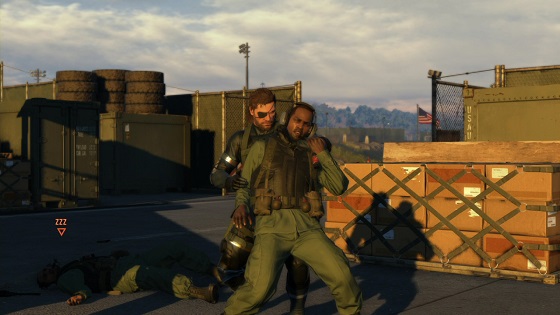 |
| Kojima Productions |
Along with Rocksteady’s Batman: Arkham games (the less said about Origins, the better), Ground Zeroes genuinely succeeds at making stealth gameplay an immersive and rewarding experience. Unlike in the early Splinter Cell entries, getting spotted isn’t a game-ending offense. And very unlike the previous MGS games, alerting the patrolling guards doesn’t turn into what Jerry Holkins of Penny Arcade has described as “an incredibly clumsy action game” and “a punishment.” For the first time, MGS features shooter mechanics on par with what you would see in a modern military game, and introduces a neat slow-motion “reflex” mode for whenever an enemy catches sight of you.
Moreover, the whole thing feels pretty seamless. The switch from stealth to full-bore action doesn’t feel like two separate modes of gameplay, one more poorly designed than the other. Both have their own share of difficulties – going loud in Ground Zeroes, while workable, is harder to pull off than in your standard action game – but overall it’s a game that ensures no two playthroughs will be alike, and even encourages this. So when you sneak your way into the depths of the prison camp to rescue Paz without killing a single person, only to barrel out in a stolen truck, guns blazing, the designers are sitting off to the side, quietly applauding.
All of the above is fantastic, and helps make Ground Zeroes a major contender for not only the best game in the Metal Gear series but the best stealth game of all time. But it seems that the better it is, the more its flaws stick out…
3 Ways It Isn’t
1. It’s Tonally Inconsistent
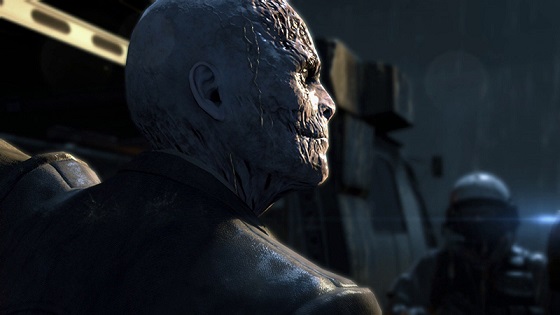 |
| Kojima Productions |
Metal Gear is a bizarre franchise when you get right down to it. While Kojima has long used the series to discuss the control of information, the military industrial complex, nuclear proliferation and other similarly serious subjects, he has done so with characters such as Revolver Ocelot, a (secret) Russian operative who wears cowboy spurs and touts the superiority of the Colt Single Action Army hangun; or Vamp, a flamboyant assassin whose – spoiler – nanotechnology allows him to be a goddamn vampire. And Kojima has never been apprehensive about having fun with his characters: moments after speaking with Mei Ling for the first time, Solid Snake starts shamelessly flirting with her; rogue GRU Colonel Volgin summons lighting and grabs crotches left and right. And, hey, having fun is great, but excessive fun can come at the expense of the deathly, seriously important subjects you’re trying to discuss.
As Ground Zeroes is completely devoid of humor – in fact, delivering some of the most traumatizing content in the entire series – it seems that it would be the better vehicle for Kojima to approach his favourite topics and themes. But on the contrary, the moments when an element of the overarching tone does falter make everything seem absurd by comparison. This might seem like a weird thing to get hung up over, but when you’re making a game about the horrors of torture, extraordinary rendition and the use of sexual assault in degrading prisoners of war, naming your main villain “Skull Face” does more harm to your story’s credibility than you might think. It’s not enough to simply portray serious, problematic subjects; as we’ll shortly see, the manner in which these subjects are portrayed can make all of the difference…
2. Everything Involving Paz
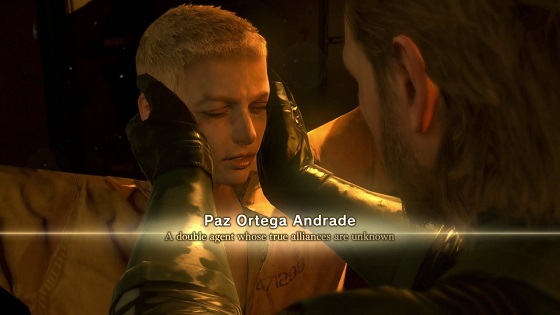 |
| Kojima Productions |
This next part deals with some truly disturbing content, so a trigger warning is necessary.
In Ground Zeroes, Boss is tasked with rescuing two people from a military black site: the first is Chico, a teenage soldier who volunteers in Boss’ Militaires Sans Fronti?res organization; the second is Paz, a young woman who claimed to be an ally of MSF but turned out to be a double-agent working for a third party. When you find the latter, she has been tortured physically, mentally and – it’s revealed in collectible audio tapes – sexually. Those who play the main game might not even have known about the last bit, were it not for the final scene in which Paz implies that her abductors planted a freaking bomb in her vagina. For a fair number of people, that last detail might be a bit jarring, if not a complete deal-breaker.
It’s not that this topic can’t be discussed in video games. In the very recent past, developers have tackled depression, as well as LGBT and racial issues. As the medium evolves and designers realize that they can explore more immersive, non-shoot-everything-in-sight mechanics, it’s very likely we’ll see more games depict sobering, real-world subjects such as rape and sexual torture. But Ground Zeroes isn’t that game. It simultaneously reveals the issue through optional collectibles and a perplexing, last-minute plot twist, and the abhorrent acts are perpetrated by a man named Skull Face. Kojima has every right to work this element into his game, but in the future he needs to put more thought into the manner of its context and execution.
3. It Makes the Wait for The Phantom Pain Genuinely Painful
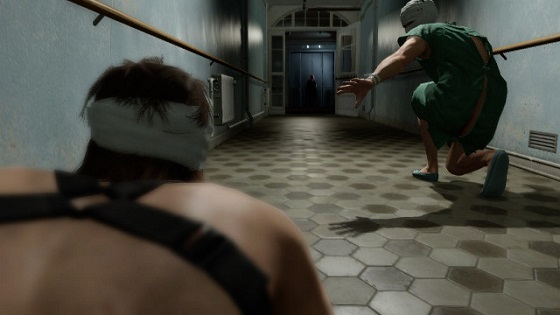 |
| Kojima Productions |
Ground Zeroes, while a rewarding little jaunt by itself, is nevertheless a filthy, filthy tease of the main event. As of this writing, The Phantom Pain still has no set release date – Amazon lists “December 31, 2014,” which is a polite way of saying “Someday? Maybe? We dunno’.”
Kojima Productions has been kind enough to supply players with a decent amount of side content so Ground Zeroes has more replayability than the average demo, but it’s still the video game equivalent of having someone watch the opening gambit of GoldenEye and telling them they won’t be able to see the rest of the movie for another year. But instead of Martin Campbell hitting the stop button just as the Tina Turner theme kicked into high gear, it’s Hideo Kojima putting you in a sleeper hold from behind as the first notes of “Snake Eater” pour out of your surround sound system.
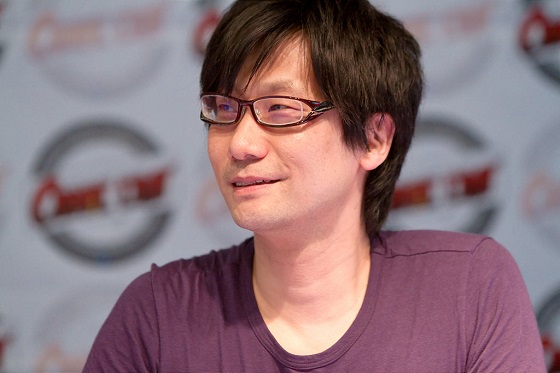 |
| Georges Seguin |
| Hideo Kojima: surprisingly stealthy |
That being said, if the next patch includes an option to play the entirety of Ground Zeroes to “Snake Eater” on loop, then the wait will be a little bit easier. Get on it, Kojima.
Related Posts
-
The 10 Most Disturbing Invader Zim Episodes
?As the creator of such underground cult comics as Johnny the
-
Oh My God I Want a Lego Prince of Persia Game Right Now
Jerry Bruckheimer's Prince of Persia: The Sands of Time movie comes
by Rob Bricken
About The Author
Luke Y. Thompson has been writing professionally about movies and pop-culture since 1999, and has also been an actor in some extremely cheap culty and horror movies you will probably never hear much about (he is nonetheless mostly proud of them, as he met his wife on one). As editor of The Robot's Voice since 2012, he can take the blame for the majority of the site's content, all of which he creates because he loves you very, very much. (Although he loves nachos more. Sorry.) Prior to TRV, Luke wrote for publications that include the New Times LA, Los Angeles CityBeat, E! Online, OC Weekly, Geekweek, GeekChicDaily, The L.A. Times, The Village Voice, LA Weekly, and Nerdist
